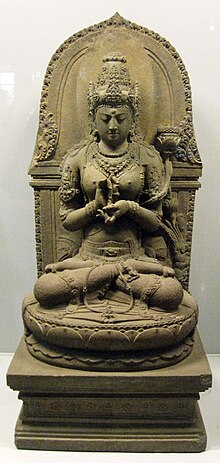
| History of Indonesia |
|---|
 |
| Timeline |
|
|
The archaeology of Indonesia is the study of the archaeology of the archipelagic realm that today forms the nation of Indonesia, stretching from prehistory through almost two millennia of documented history. The ancient Indonesian archipelago was a geographical maritime bridge between the political and cultural centers of Ancient India and Imperial China, and is notable as a part of ancient Maritime Silk Road.[2]
The first government institution of archaeology was officially formed in 1913 with the establishment of Oudheidkundige Dienst in Nederlandsch-Indië (Archaeological Service in the Dutch East Indies) under Professor Dr. N.J. Kromm.[3]: 5
Today, the national institution of archaeology in Indonesia is the Pusat Penelitian Arkeologi Nasional (National Archaeology Research Institute).[4]
- ^ "Worshipping the Source: The Buddhist Goddess Prajnaparamita". egregores. 25 September 2009. Archived from the original on 2017-09-02. Retrieved 2017-09-10.
- ^ "Maritime Silk Road". SEAArch. Archived from the original on 2014-01-05. Retrieved 2017-09-11.
- ^ Soejono (R. P.) (2006). Archaeology: Indonesian Perspective : R.P. Soejono's Festschrift (in Indonesian). Yayasan Obor Indonesia. ISBN 9789792624991. Archived from the original on 2017-09-10. Retrieved 2017-09-10.
{{cite book}}:|work=ignored (help) - ^ "Sejarah Pusat Arkeologi Nasional". Pusat Penelitian Arkeologi Nasional (in Indonesian). Archived from the original on 2017-09-10. Retrieved 2017-09-10.
© MMXXIII Rich X Search. We shall prevail. All rights reserved. Rich X Search
